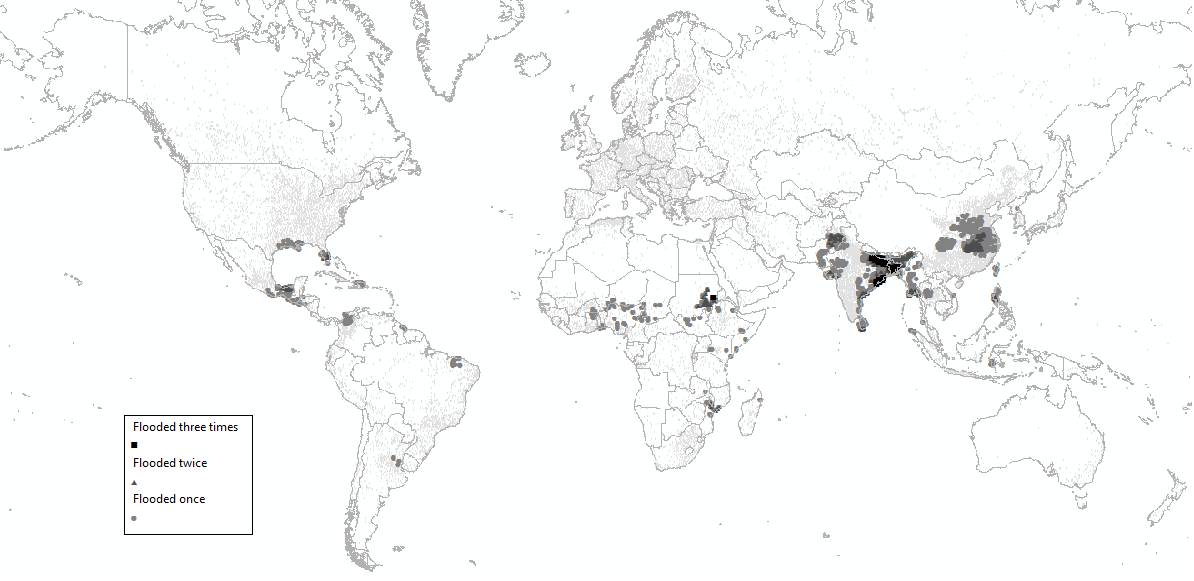New study on overpopulation in flood-prone locations

New research by Dr Tom McDermott of the School of Economics and the Environmental Research Institute (ERI) at UCC, with colleagues from the London School of Economics and Oxford University, has examined the exposure to urban flooding worldwide and whether urban populations respond to large floods by moving to safer areas.
Extreme rainfall during December 2015 has resulted in widespread flooding across parts of Ireland and the UK. With the devastation set to cost the UK economy alone as much as £3 billion, according to estimates by the consultancy firm PwC, an important policy question is posed: Why are so many people hit by flooding, particularly in locations that are repeatedly inundated. In Ireland, many of the same locations that were hit in recent weeks were also flooded in 2009?
The recent events in Ireland and the UK are just one example of a major global problem. Over the past 30 years, floods worldwide killed more than 500,000 people and displaced over 650 million people and the problem is likely to worsen as populations increasingly concentrate in vulnerable urban areas, and climate change brings more intense rainfall episodes and sea level rise.
In their new study, Dr McDermott and his colleagues look at the effects of more than 50 large floods, which displaced at least 100,000 people each, in over 1800 cities in 40 countries from 2003 to 2008. They found that low-lying urban areas are hit much more often by large floods, and yet these vulnerable locations also concentrate a higher density of economic activity.
When cities are hit by large floods, the low-lying areas also sustain more damage – but like the rest of the flooded cities, they recover rapidly and economic activity does not move to safer locations.
So why do urban populations not respond to floods by moving to safer areas? Part of the problem is that many historical cities were built in flood-prone locations, the risks of which were once offset by access to rivers or oceans. These cities persisted in their flood-prone locations even when modern land transport reduced the importance of access to waterways.
But this is not the only reason why flood-prone locations are overpopulated. Governments bear much of the costs of building and maintaining flood defences and compensating flood victims. As a result, private developers can build on cheap flood-prone land without bearing the full cost of their actions. Consequently, too many people end up living in these risky areas.
Co-author Dr Tom McDermott commented: “As a society we appear to be overly-exposed to flood risk – there are various reasons why developers and house builders do not take full account of flood risk when deciding where to build. Rising sea levels and more extreme rainfall episodes as a result of climate change will lead to greater flood risk – more frequent flooding of existing flood-prone areas or an expansion of areas at risk.”
“At a minimum, tighter planning restrictions are required to prevent new building on existing flood plains,” he added.
The new study has been published as part of a Working Paper series at the Centre for Economic Performance (CEP), LSE.
